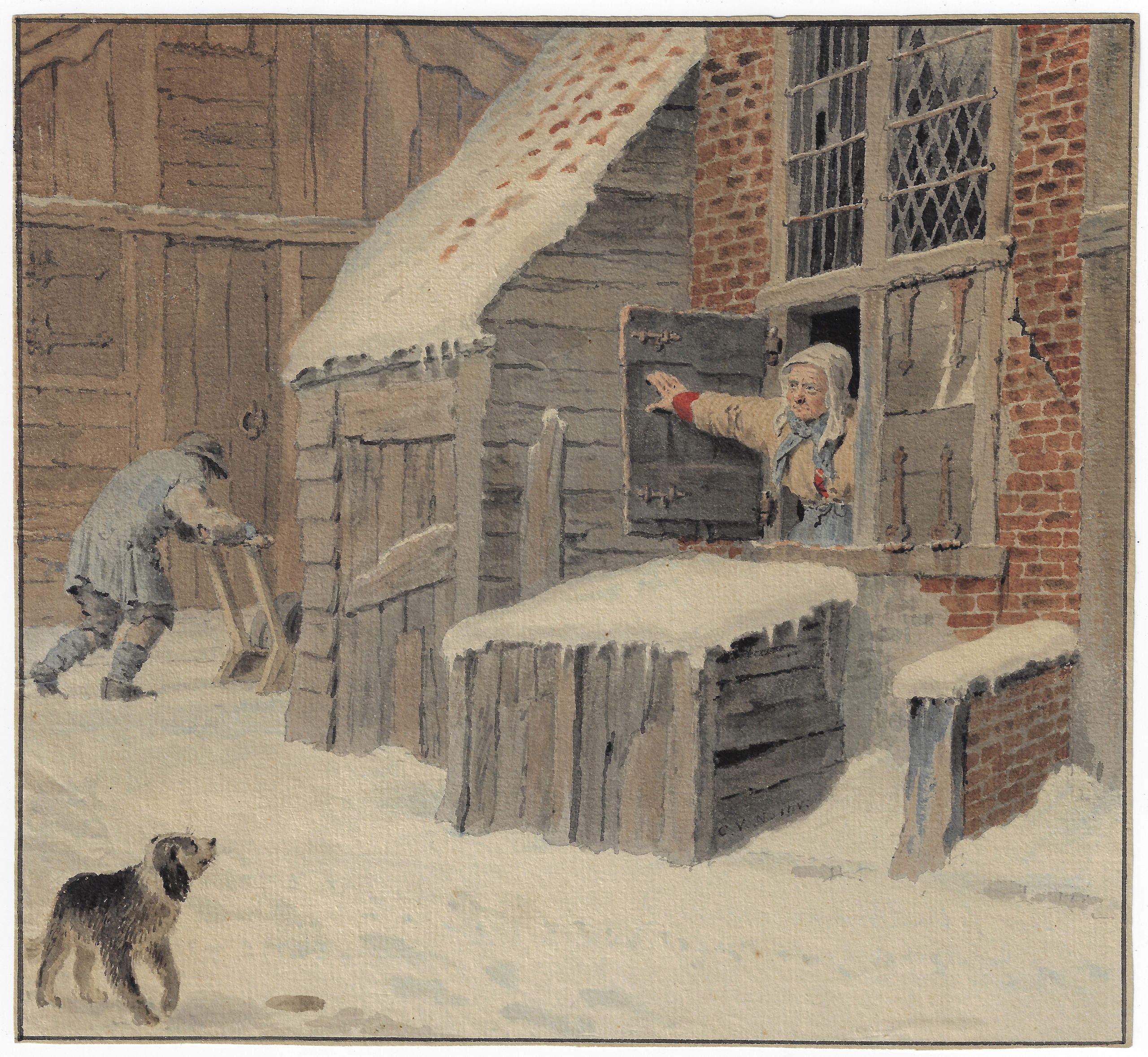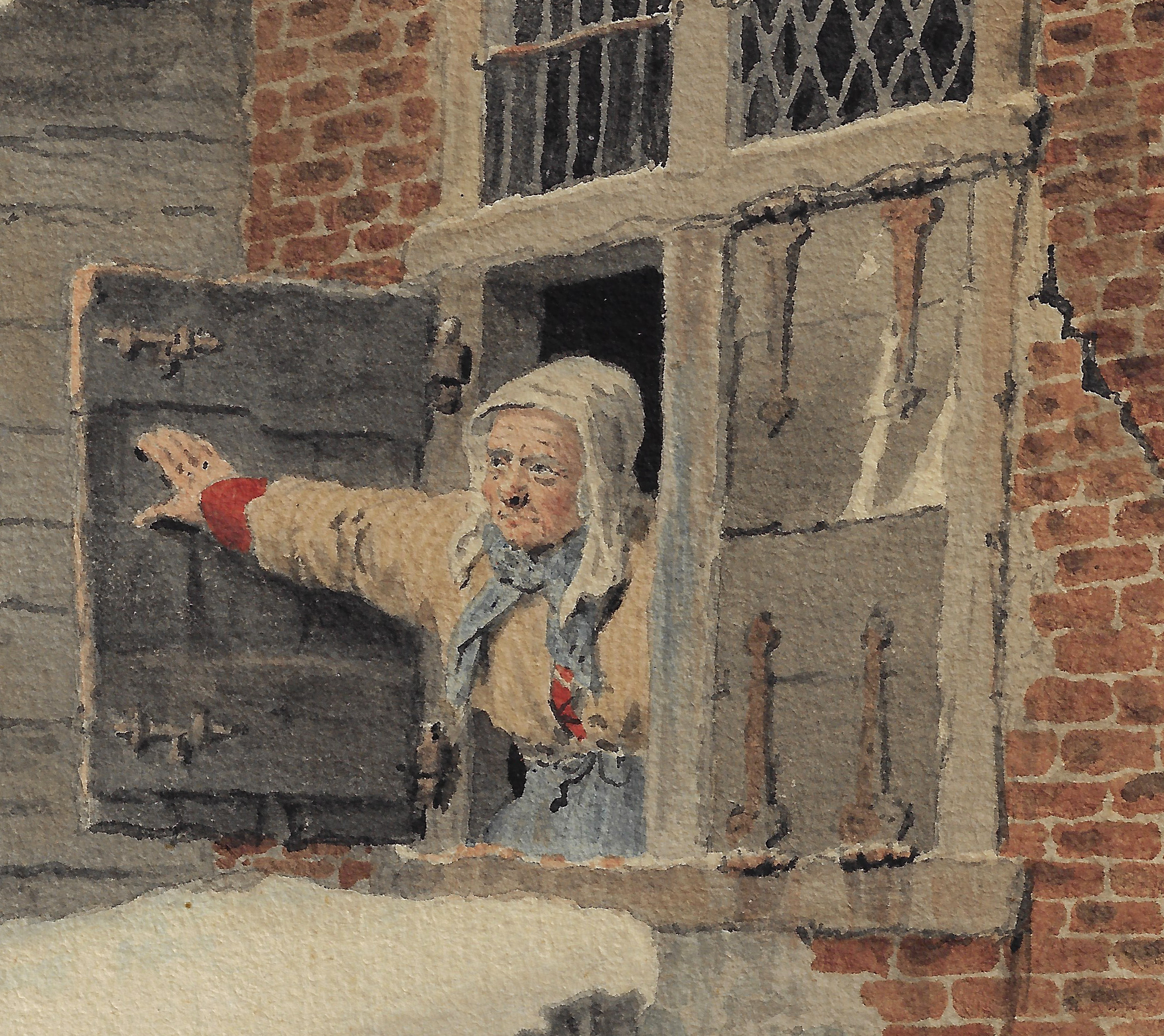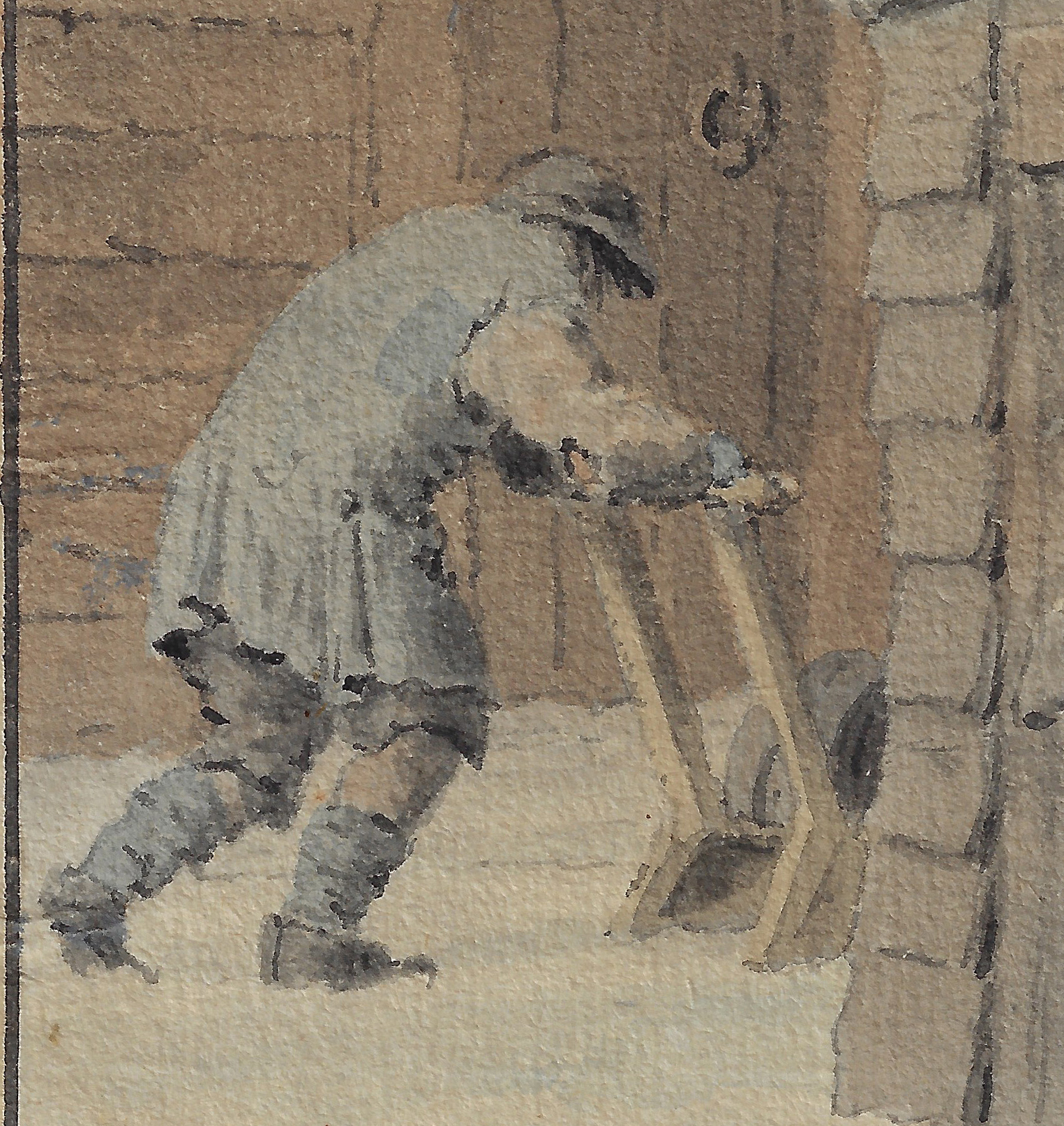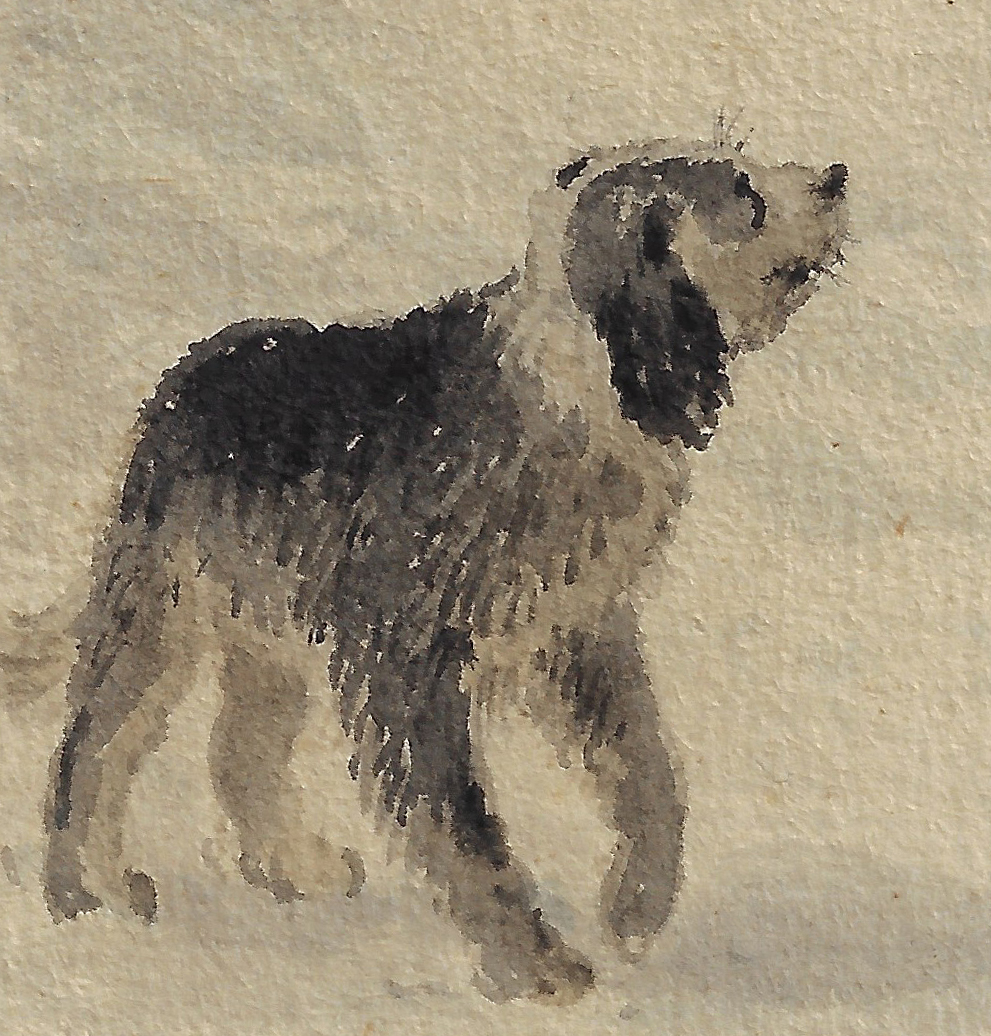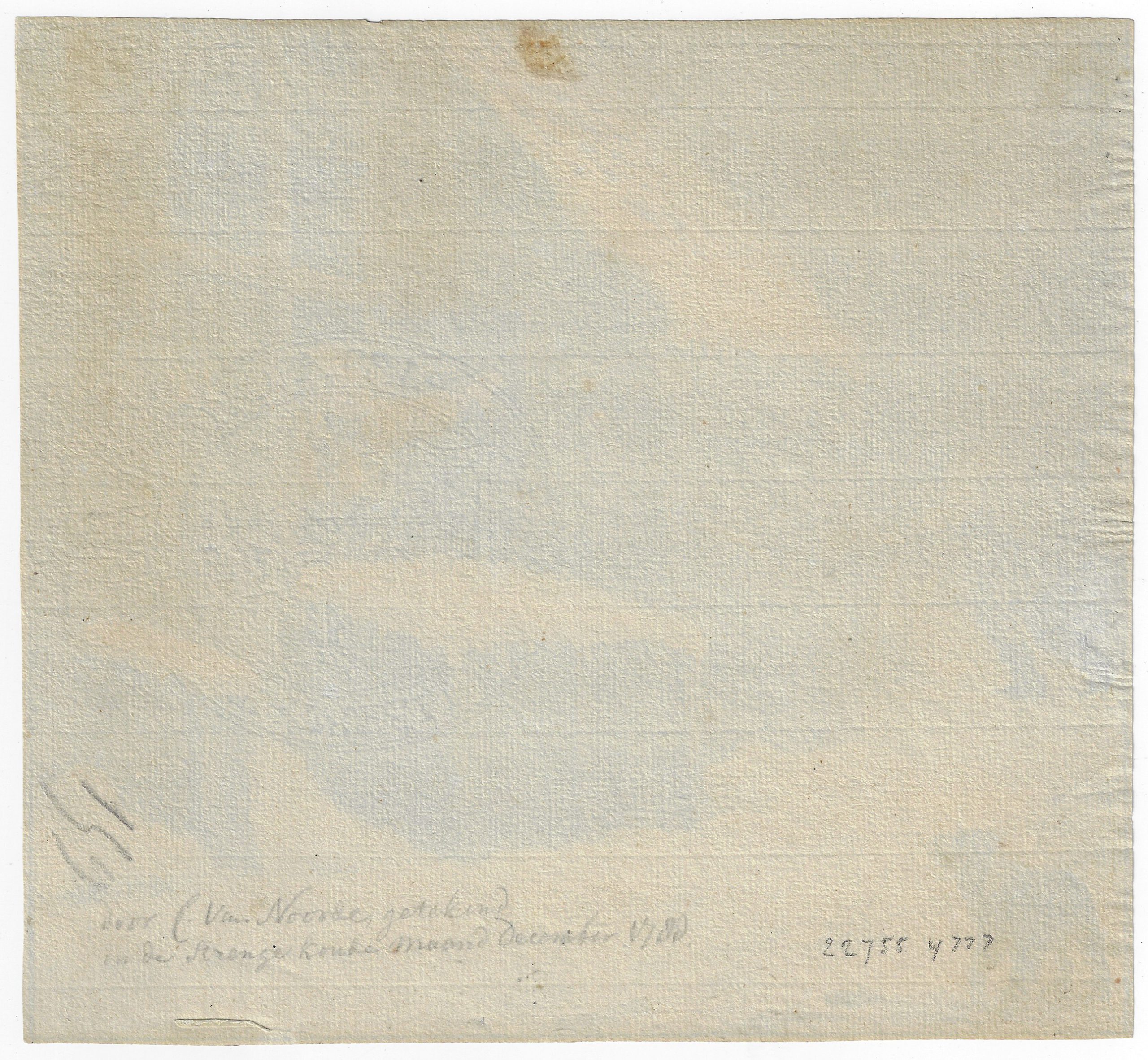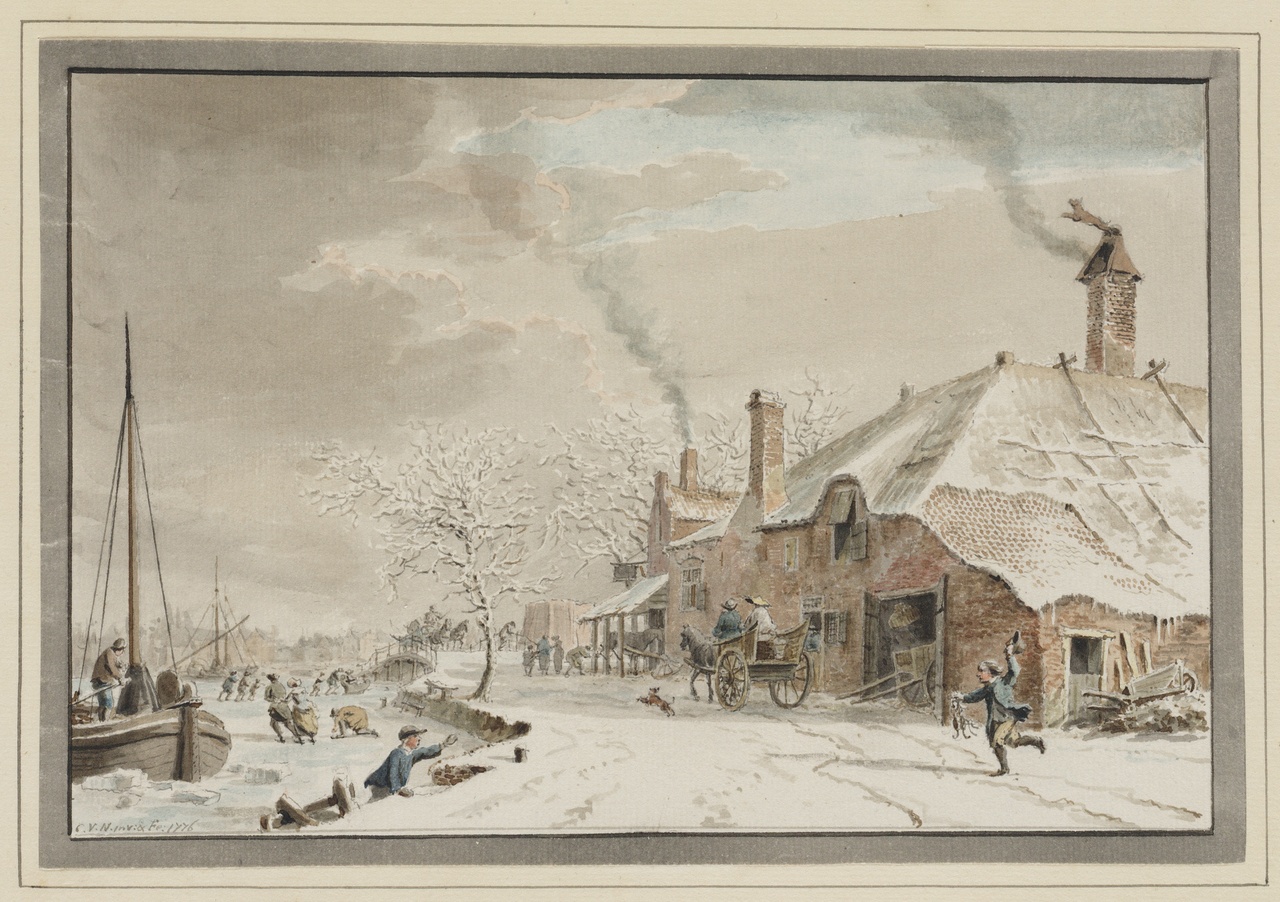CORNELIS VAN NOORDE (Haarlem 1731 – 1795 Haarlem)
Cornelis van Noorde (Haarlem 1731 – 1795 Haarlem)
Town Scene During the Harsh Winter of 1788
Graphite, watercolour, black ink framing lines, watermark lion in circle (Pro Patria / Vryheit), 195 x 212 mm (7.7 x 8.3 inch)
Monogrammed ‘C.V.N. inv.’ (pen and grey ink, on plank underneath woman) and annotated ‘door C. van Noorde getekend / in de strenge koude maand December 1788’ (graphite, verso)
Provenance
Private collection, France
***
Cornelis van Noorde was born in Haarlem in 1731, the son of a baker.1 Originally he was apprenticed to his father, but his considerable artistic talents led him to choose another career. He was taught by Frans Decker (1684–1751) and Tako Hajo Jelgersma (1702–1795). In 1761 he became a member of the Haarlem Guild of St Luke. Van Noorde lived in a house on the Oude Gracht which he had inherited from his artist uncle Cornelis van der Berg, who had also kept a studio there. In 1783 he married Catharina van Seelen, but the marriage remained childless.
Van Noorde was a teacher and director of the Haarlem Teekenacademie (drawing academy), of which he was one of the founding members in 1772. Among his pupils were Augustijn Claterbos, Warnaar Horstink and Johannes Swertner. Van Noorde worked almost exclusively in watercolour, producing portraits, landscapes, copies after 17th-century paintings, and architectural views, which have brought him most fame. He is considered to be the most interesting topographical artist in Haarlem during the eighteenth century.
The present charming watercolour is an exceptionally intimate work in Van Noorde’s oeuvre. Van Noorde has depicted a poorer part of the town: there are cracks in the brick wall of the house, and the window frame with its small leaded panes and wooden shutters appears to be centuries old. The woman opening one of the shutters is dressed warmly against the cold, as is the man pushing the sledge. The dog in the foreground is most amusing and masterly observed. The sheet can be compared to Van Noorde’s Ice Skaters on a Frozen Canal near a Town in the Graphische Sammlung im Städelschen Kunstinstitut, Frankfurt am Main2 and to a comparable scene in the Teylers Museum, Haarlem (fig.).3 A further comparable view of a town in winter is preserved in the Hessisches Landesmuseum, Darmstadt.4
The winter of 1788-1789 was one of the coldest winters in Northern Europe since records began in 1706. It has been speculated that this winter was the coldest of the last millennium, and was a climax of the Little Ice Age of the seventeenth and eighteenth centuries, which inspired so many winter scenes by Dutch painters and draughtsmen. The harsh winter of 1788 caused grain prices to rise spectacularly, which turned out to be one of the causes of the French Revolution in 1789, illustrating the social and cultural effects that changes in climate can have on our world.
1. For the artist, see Bert Sliggers, Cornelis van Noorde (1731-1795): een veelzijdig Haarlems kunstenaar, Haarlem 2011 and Bert Sliggers, Het schetsboek van Cornelis van Noorde 1731-1795, Haarlem 1982.
2. Pen and ink, watercolour, 130 x 227 mm; inv. no. 3287.
3. Pen and ink, watercolour, 160 x 232 mm, signed and dated 1776, inv. no. TvB T 127.
4. Monogrammed and dated ‘C.V.N. / inv.: / 1778’; inv. no. AE 977.
